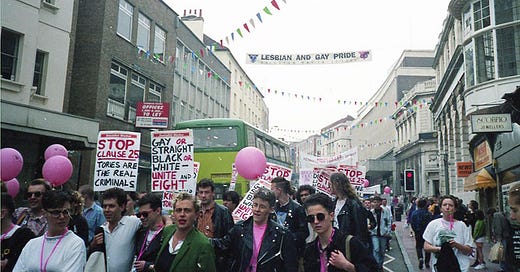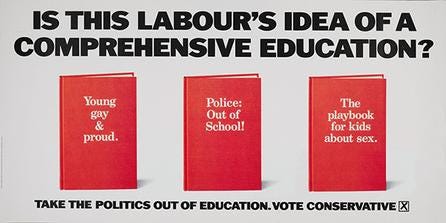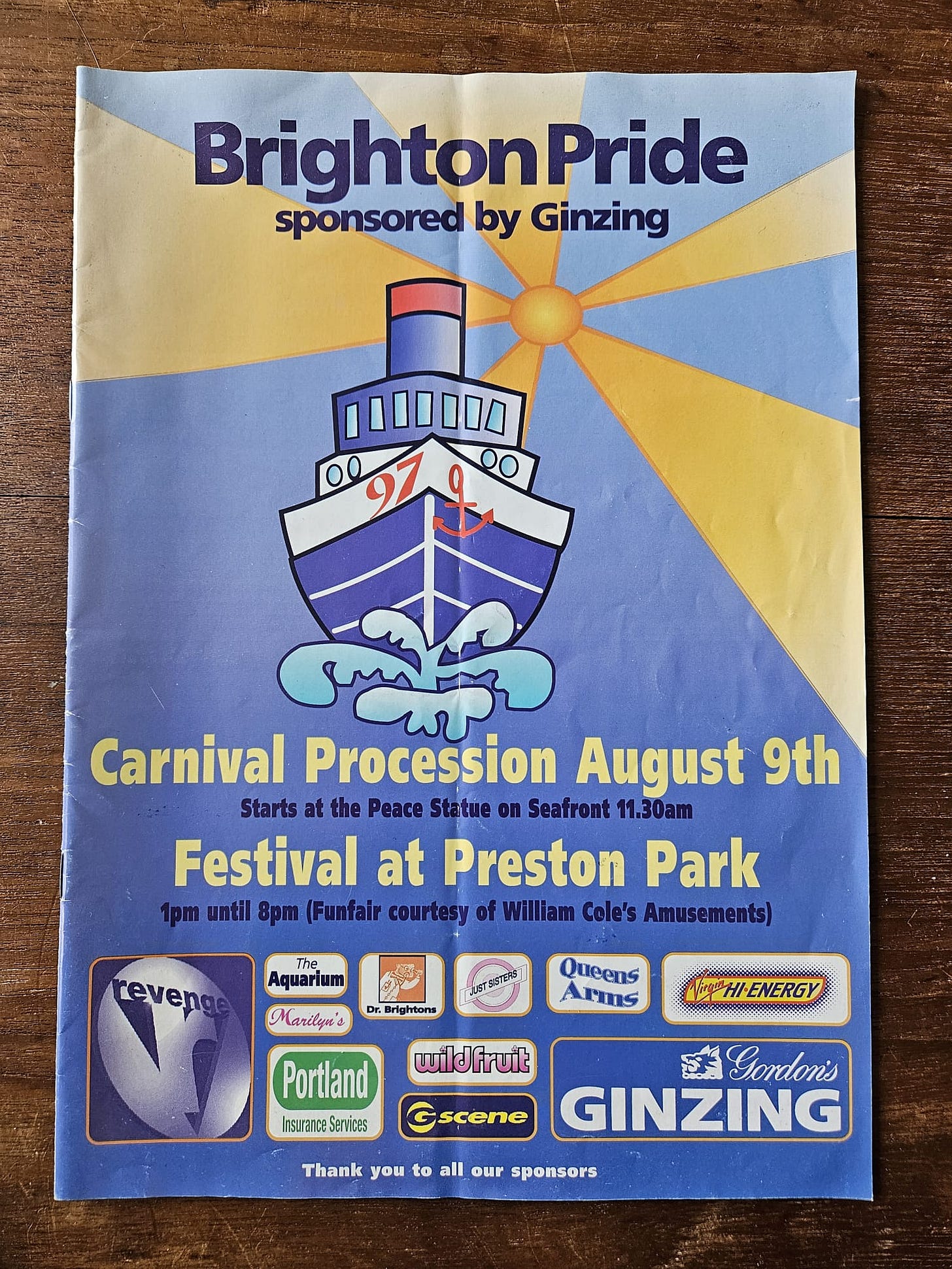Alf Le Flohic: Section 28 was trying to make us feel ashamed and invisible
Early Pride marches paved the way for a more inclusive society but it was a battleground for those wanting a better, more gay-friendly Britain
These articles are vital and entirely funded by me, so please donate here to continue to support similar investigations. If that link doesn’t work for you (or if you’re paying by Mastercard) then you can also use my Ko-Fi here.
I am a journalist who writes for BBC Culture, Pellicle and Vittles. I was named Beer Writer of the Year in 2023 by the British Guild of Beer Writers.
I’m offering my book, Desi Pubs, at Amazon prices. I can have it sent to you very quickly for £12.29! Message me on Bluesky for copies. There’s a review of it here.
Disclaimer: this newsletter often mentions beer and pubs. You do not have to read this if your life has been affected by substance abuse.
This is the second of three Substacks focusing on the late 20th century fight for inclusion in spaces, such as pubs in the Sussex area of the UK, by gay people.
For this I’ve interviewed Alf Le Flohic, a queer historian, who was born in Southampton in the mid-1960s, who today will explain how Section 28 - which I explained here - galvanised the gay community because it threatened their existence.
It’s about how Pride marches, which were part of pub culture, led to a wider acceptance of LGBTQ+ people.
In effect, this populist reaction to gay life prevented councils from funding LGBT initiatives at a time when the AIDs epidemic was rife. Fighting against its implementation when, in 1988, 75% of the UK thought being gay was wrong, was a battle that would’ve been difficult for a gay man navigating their identity for the first time, as I wrote about last week.
But by now Alf’s small-town days were over and due to successfully finding his place in gay pubs and clubs, he was now filled with confidence going from being slightly shy, to being out and proud.
Within a couple of months of arriving in the East Sussex seaside resort, he heard about a meeting held by the Brighton Lesbian Action Group to discuss Section 28. He walked to the community hall, opened the door to discover 300 other attendees and realised that the new law had the opposite effect that was intended. It made gay people stronger.
“They were alarmed by this legislation,” he said, “but it brought the gay community together because we had the numbers and we were supporting each other - before that we were all small groups doing our own thing”.
Alf attended a series of demonstrations over the law in 1988, 1989 and 1990 and then he realised that Section 28 was trying to end everything we discussed last week - the gay spaces, the camaraderie and the joy.
“It was trying to make us feel ashamed and make us invisible,” says Alf.
Which is when the idea came in 1991 of using Pride to galvanise the movement against Section 28.
Twenty members of the Sussex Gay Liberation Front with banners and badges gathered one afternoon on Brighton seafront in October 1972 to make history. The group - made up of students and staff at the University of Sussex who joined lesbians and gay men from Brighton - had been formed the previous year.
The idea was to meet under the banner - both literal and symbolically - of being ‘Glad to be Gay’ and this Gay Day campaigned for the age of sex to be on par for straight people, an issue mentioned last week.
A bigger event was organised for the following year, taking its lead from London’s first Gay Pride march on 1 July 1972 - the nearest Saturday to the anniversary of the Stonewall riots on 28 June 1969.
Brighton’s first-ever Gay Pride in 1973 was a whole weekend of events, starting with a disco at the Stanford Arms (now The Joker) organised by Sussex Gay Liberation Front who held regular nights there until a year later.
But Brighton Pride itself was mothballed until 1991 when it became vital for gay people to take to the streets when marchers took a route from Hove Town Hall to Brighton Town Hall in what Alf describes as feeling like “a rather rough old affair, just a renamed anti-Section 28 march really”.
That said, it was an impressive four-day lesbian and gay festival of events, with its own programme, including a disco, film screenings, pavement drawings and walking tours. There was even an alternative Miss Brighton event in the train station car park hosted by Lily Savage (Paul O’Grady) and broadcaster Simon Fanshawe.
Alf compares the Pride events he attended from 1991 to being similar to the Notting Hill carnival which came out of a race riot and then became a more accepted celebration (with the caveats that the media will often focus on the negative aspects).
“Pride came out of discrimination,” he tells me. “In the early marches people would swear at us, spit at us, and try to walk straight through the march. It was antagonistic and really quite scary to start with. You concentrated on shouting and getting to the destination in one piece.”
But the experiences Alf had were moving in terms of solidarity and he admits he never knew so many gay people existed when they came en masse for the 1991 Pride march. Like being in gay pubs, it was yet another chance for Alf to be in a space where gay people weren’t in the minority.
There were straight people turning up but, Alf admits, these days they would be described as queer and were “very much allies” - but there weren’t many as this was a serious, and at times - dangerous - march.
Alf believes the year Pride became less of a battleground and started to become more accepted was in 1995 when it gained sponsorship from local bars and clubs. By 1997, sponsors included Gordon’s just before the gin became controlled by Diageo.
It coincided with the combination therapy for HIV coming on to the market in 1996, and Alf says “it felt like the world no longer wanted us all dead”.
Where we are today with Pride being a mainstream event and a wider acceptance of LGBTQ people is, according to Alf, from the early protests and “a lot of brave people coming out and standing up for themselves”.
Next week I’ll look at the hedonistic side of the gay pub and club scene including one Tuesday night disco … in a zoo!








